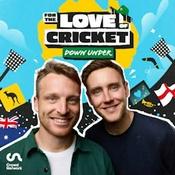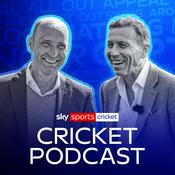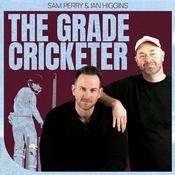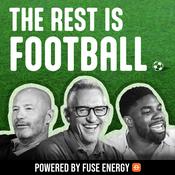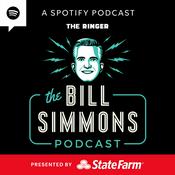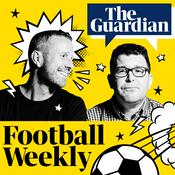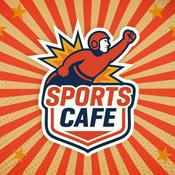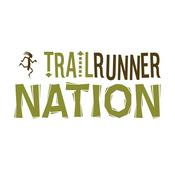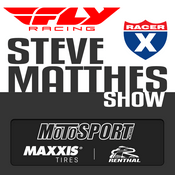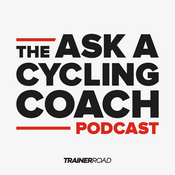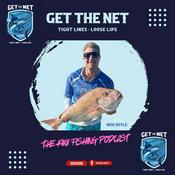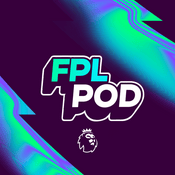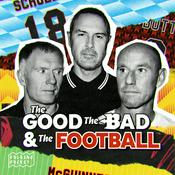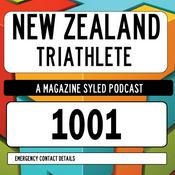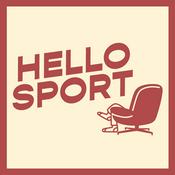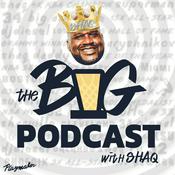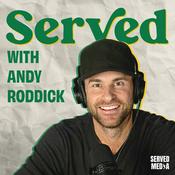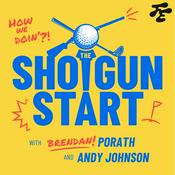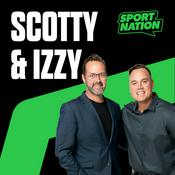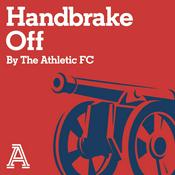526 episodes

Matt Brittin - what rowing taught me
14/12/2025 | 28 mins.
Looking backwards to go forwards: what rowing taught me about big tech and what big tech taught me about rowing with Matt Brittin. Timestamps 01:00 From schoolboy to the Olympics - from a family of ball sport heros. Matt was inspired by Martin Cross to row to a high level - he was his school teacher. Later he was President of his university club where he led the introduction of professional coaching. 04:00 Rowing teaches skills Matt was running Google in Africa, Middle East and Europe for the past 10 years - he tells a lot of anecdotes about rowing. Steve Gunn (a harsh coach) taught how to take responsibility for what you are doing. Are you a piece of sh*t on the end of the oar? When the mindset is right but the self-appraisal was not. The things Matt learned at rowing were the human things - more useful than Business School, Consultancies and University. I wouldn't be where I am in the business world without the rowing lessons. 08:30 Act like an owner The unique side of rowing is that when I'm seat racing, I'm against you. When we are in the crew, I'm with you. Act like an owner at Google - take responsibility for what you're doing and win as a team. We collaborate hard - and sometimes a collaborative competitiveness gives a better outcome. 11:00 High Pressure Situations The start line of a Henley Royal Regatta final is where Matt felt the most intense pressure. Take confidence from the feeling of nerves and the adrenaline surge - this is a sign you are ready for a big performance. Get the attention off yourself - focus on the process is helpful. Know there is someone there who wants you to succeed. 14:45 Henley Royal Regatta Progress Matt is a Henley steward - he marks the progress over recent years. Sir Steve Redgrave asked Matt to help the committee to plan a 10 year strategy. It looks unchanging yet it's always evolving. Three new womens quad scull events were announced - near parity in Open events and Womens events. Since 2015 every race has been on YouTube live and on demand. You Win or You Learn. 20:00 Returning to Rowing It has been a joy and a recalibration too. The gains as you come back are lovely - rediscovering the joy. A lot is about remembering the feelings. How to balance training and travelling for work. How you manage your time at work is important. Matt blocks his diary to take kids to school twice a week - the most important time of the week. He does the same for rowing training. The discipline when traveling of visiting the hotel gym. The more senior you get the more important it is to show up refreshed and feeling great - in good shape. Leaders need to be in the moment and to have time for staff. Matt is planning to mentor people in business, improve his sculling, rowing strength training this year. Masters rowing is "running up the down escalator". It doesn't have to be the same each year - unlike younger rowing years. Choose something fun to plan for your future rowing.

Alex Wolf & Sam Dutney in conversation
08/12/2025 | 1h 4 mins.
Alex Wolf & Sam Dutney in conversation. Two leading thinkers and innovators for masters rowing discuss strength training for masters. The principles around maximal force applies everywhere. Teach athletes how to express maximal force. Learn the ceiling of what you can do. Turn muscles on and off. Practice being forceful really quickly. Building habitual capability. your day to day. Take a small change from what you do now and a little bit more than you can already do. That's enough. Strength training is one of the most potent stimuluses for our health. The only thing which can repair your muscle structure is targeted loading, not rest. The kenee takes a load of up to 2 times body weight for rowers - masters it will be 1.2 to 1.7 times body weight. When squatting the leg is not the limiting factor - the lumbar spine tolerance is the limit. This is not the case in a rowing boat because the forces are horizontal. The 7 stroke max test has a strong correlation to performance. Increasing this has got a 1:1 correlation with improvement. How can you know if the improvement will come from force production or maximal force? The rowing stroke is primarily concentric force production. Does eccentric have an effect? Yes, it's a long stretch shortening cycle. The end of the drive back to the catch has a significant contribution to boat speed. The Reactive Strength Index. How you control a decelerating force and turn it round into an accelerating force. Rate of force is how much, when and how quickly. Utilise each exercise efficiently is key. The king of exercises is the one that reaches your outcome. You must lift enough to create an adaptive response. Want easy live streams like this? Instant broadcasts to Facebook, YouTube, LinkedIn. Faster Masters uses StreamYard: https://streamyard.com/pal/d/5694205242376192

Oar protection
01/12/2025 | 8 mins.
Defensive protectors for oars and sculls to prevent the paint wearing off and the spoon degrading. Things you can do to preserve the spoons and handles. Timestamps 00:45 Oars get wear and tear You paint the spoons in the club colours and the paint wears in the middle of the back of the oar and the tips of the blades get worn off at the corners (so you no longer have a sharp corner). Defensive protectors for oars Our dock is wood and the surface gets greasy and is a slip hazard. We put non-slip matting onto the dock - water drains through the holes. The brand is Ako Matting and is recommended for ice, snow and water uses. The downside is the surface is abrasive on oars because of the non-slip elements. 03:00 Rules for oars We have a rule that when you land and leave the dock we always put our oars tip side down on the dock. This helps to preserve the paint and stop the wear patterns on the back of the oars. Tips down meant we got wear on the tip of the blade. Croker Oars have tip protectors - little triangles which fit over the corners and you superglue in place. https://www.crokeroars.com/product-page/row-tip-protectors-pair-4-tips The plastic takes the wear rather than the carbon oar. Concept2 oar users can use the vortex edge - it's a strip which goes along the length of the oar tip. https://www.concept2.com/oars/sculls/blades#vortexedge The wear on the tip of the oars reduces the surface area of the spoon. And the wear is always in the same direction - my sculls ended up thinner than 3mm. This is the legal minimum for World Rowing rules - I had to sand down the tips of the blade to restore the minimum 3mm. 05:30 Protective decals A scuff pack kit made to protect the back of the oar from rubbing when your oars are on the bank. Defensive protectors for oars https://crayfishrowing.com/shop/ols/products/scuffpatch-kit-for-two-oars and the Croker oar corners Lastly - blade wraps - vinyl that is pre-printed with your club colours and they are cut to the oar spoon shape. Use a heat gun to apply them and it also gives some protection to the oar spoon. https://regattaprint.com/blade-wraps-team-sweep-oars/ How to wrap oars https://www.youtube.com/watch?v=FxcaeTeOz_g&t=10s Take care of your oars to make them last longer. If you paint your oars the old fashioned way is to sand them and use marine-grade gloss paint with undercoat and topcoat paint layers. Others have used spray can car paint too. We had stickers (decals) of the club logo made to put on the shaft of the oars so that they can be identified - helpful if you don't paint your oars and they look the same as every other club. Easy for them to get lost at a regatta. Want easy live streams like this? Instant broadcasts to Facebook, YouTube, LinkedIn. Faster Masters uses StreamYard: https://streamyard.com/pal/d/5694205242376192

Up your intensity
23/11/2025 | 9 mins.
Ways to improve speed of the oar through the water. Keep the stroke rate the same and increase the speed. Timestamps 00:45 This is a long term project. Less experienced rowers push the oar less hard than the more experienced and you need to train this. Time through the water at stroke rate of 20 is approximately 3 seconds per stroke. Pushing the oar through the water on the power phase takes 1.2 to 1.5 seconds and yet we row with a ratio of at least 2:1 at low rates. Experienced rowers get more rest every stroke. They push the oar with high intensity through the water and so they have more time with the oar out of the water. 03:30 Same rate more speed How to row at the same stroke rate and deliver more force into the boat hull. The key to training this on the erg was to start with a focus point once every 5 minutes for 10 strokes. For ten strokes push harder through the power phase but you're not allowed to take the rate up. This showed us how much harder we could push and how much more rest we got as a result. It depends on your muscular strength and fitness. Then we moved to doing this for a minute. After each intense stroke period we allowed 5 strokes to recover and take a little rest. Over time, you don't need to take that rest. 06:00 Up one: down one Taking the same principle of increased intensity into the boat. We call "Up one down one" which means take the stroke rate up one point in rate through the water and down one point in rate on the slide. So at rate 20 you move to rate 21 through the water and rate 19 on the slide - which averages to 20. This has the effect of intensifying the power phase. Train yourself to do this and it gets a better ratio in the stroke - you learn how to relax more as you rest on the recovery. The benefit is slightly more boat speed, slightly more rest and this helps to keep the boat moving fast through the water. Here's an earlier episode which covers this topic further of how to train yourself to relax. https://fastermastersrowing.com/get-more-speed-on-the-recovery/ Do this for short periods to begin with as it's tiring. Introduce it to your warmup just for 5 strokes at each stage in the pick drill. Want easy live streams like this? Instant broadcasts to Facebook, YouTube, LinkedIn. Faster Masters uses StreamYard: https://streamyard.com/pal/d/5694205242376192

Raise average boat speed
17/11/2025 | 9 mins.
Three ways to get faster (or avoid slowing down) in training. Timestamps 00:45 Can you increase the average speed of your boat? The net of how fast it accelerates in the power phase and how much it slows in the recovery phase. Our past episode about how to get speed on the recovery https://youtube.com/live/RRF3o7LxNXM 01:45 Row to the Conditions Pay attention to the water surface, to the wind and waves, to the water swirls under a bridge. This allows you to make subtle changes to how your boat is moving. Rowing in a headwind - at the start the waves are highest (they've progressively built up) and these lower as you get closer to the end of 1k. With large waves you cannot rate high. When rowing to the conditions as you notice the wave height reducing, push on and increase the rate by half a point. You can also change the ratio (intensity through the water compared to relaxation up the slide). 04:30 No huge moves If you do a big push the chances are you will suffer a large fall off in boat speed after the push is done. Choose moderate moves and you are more likely to be able to hold the new boat speed after it ends. Make your moves sustainable longer. Pushing hard means you may compensate by trying to save energy and your pace judgement may suffer. 06:00 Avoid rowing in dirty water The puddles of the crew in front are disturbed water. When the water block is churned by someone else's oar it makes the water unstable and hard for you to get your oar to grip the water. This affects the boat run and your ability to put energy into pushing the boat forwards. When rowing near other crews, put their puddles under your riggers - between the hull and your spoon. The disturbed water will neither affect the run of your hull nor your spoon grip on the water. Rowing in dirty water is hard to avoid if your eight has an unconventional rig (Two people on the same side in sweep eights) this may result in bow and stroke being on the same side. Only the fastest mens eights can avoid stroke rowing into bow's previous puddle. Want live streams like this? https://streamyard.com/pal/c/5694205242376192
More Sports podcasts
Trending Sports podcasts
About RowingChat
Listen to RowingChat, For The Love Of Cricket and many other podcasts from around the world with the radio.net app

Get the free radio.net app
- Stations and podcasts to bookmark
- Stream via Wi-Fi or Bluetooth
- Supports Carplay & Android Auto
- Many other app features
Get the free radio.net app
- Stations and podcasts to bookmark
- Stream via Wi-Fi or Bluetooth
- Supports Carplay & Android Auto
- Many other app features


RowingChat
download the app,
start listening.
